Scottish Cat - Who Are They?
Table of Contents
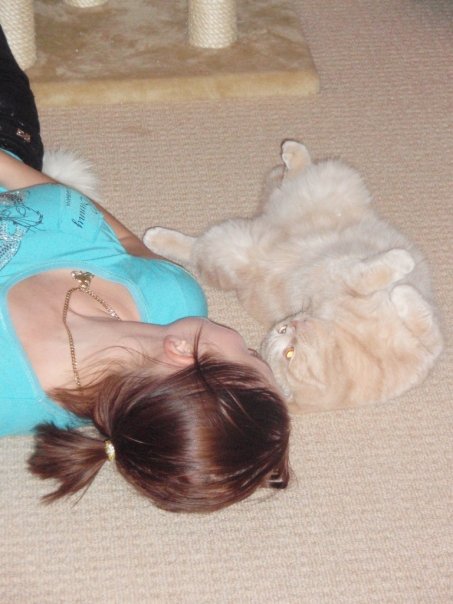
BREED STANDARD
SCOTTISH STRAIGHT & FOLD
Body: Medium to large, muscular, and stocky. Chest, back, and shoulders are broad and massive. The neck is short and strong. Legs are short and sturdy, with thick, rounded paws. The tail is of medium length, reaching at least to the shoulders. It ends in a rounded tip, without any rigid or thick parts, and must be flexible from base to tip.
Head: The head is round, large, and broad with a firm chin. The nose is short, broad, and straight. The profile has a curve (without a stop). Cheeks are full and rounded. Large, round whisker pads give the short muzzle a defined outline.
Ears: Ears are small and folded forward. They have rounded tips directed toward the center of the head. They are set wide and close to the head. In Straights, the ears are upright. NB! Our cattery does not breed the lop-eared version due to their risk of joint problems.
Eyes: Eyes are large and round, set wide apart. Eye color must correspond to the coat color.
Coat: Shorthair: The coat is short and very dense, standing away from the body. It is airy due to sufficient undercoat. The texture must not feel woolly. Longhair: The coat is medium-length and very dense, with sufficient undercoat. It must not be flat or clinging.
Color: All colors and patterns, with any proportion of white and including point colors, are permitted.
Faults
- Stiffness in any part of the tail is a fault (in Folds)
- Ears held away from the head (only in Folds)
- Profile with a stop
| Points Table | |
| body | 10 points |
| saba | 15 points |
| head | 15 points |
| Ears | 30 points |
| Eyes | 15 points |
| Texture and colour of the jacket | 10 points |
| Situation | 5 points |
Breeding and Registration
- Mating between two lop-eared cats is prohibited; Our cattery no longer breeds lop-eared cats due to the risk of joint problems!
- Only British/American/Scottish short- and long-haired cats are permitted for breeding;
- Registering straight-eared kittens as British short- or long-haired cats is prohibited.
HISTORY
In 1961, a shepherd named William Ross found the first known Scottish Fold at a farm near Coupar Angus. He took home a small white kitten with lop ears named Susie, who became the foundation of the breed. Her charming appearance, reminiscent of an owl or a teddy bear, drew significant attention from both cat lovers and show judges, and in 1978, the American cat club CFA was the first in the world to recognize the breed.
BREEDING
here are two types of Scottish cats: those with lop ears and those with straight (normal) ears. Lop ears are caused by a dominant gene resulting from a natural mutation. Straight cats are therefore crucial in breeding. One parent must always be a Straight to avoid joint stiffness in kittens. This issue can still occur in cats with one Fold gene, but ethical breeders, like Macrory, do everything possible to use healthy animals in breeding to minimize this risk. Those who want to completely avoid the risk choose a Straight cat. All the great qualities, including temperament, are the same, but the risk of joint problems is eliminated. For this reason, our cattery has chosen to continue breeding only straight-eared cats. In Belgium and certain other EU countries, the lop-eared version of the breed is already banned, and it’s likely that other countries will follow this path due to animal welfare concerns.
For a couple of decades, both British and American Shorthairs have been used in Scottish cat breeding. However, the breed is entirely unique. It doesn’t have the robust, powerful body or nose of the American Shorthair, nor does it have the stocky, massive body, very short legs, or flat head typical of the British Shorthair. The Scottish cat is a medium-sized, round, and soft cat with a short, dense, and plush coat that stands away from the body. They have large, round, widely spaced, wonderful eyes that radiate love. Their cheeks are round and full, and their short nose has a gentle curve in profile.
Scottish kittens are all born with straight ears. At three to four weeks, it becomes clear which will be Folds and which will be Straights—some have ears that fold close to the head, while others remain upright. By 6–8 weeks, it’s possible to roughly determine the kitten’s class—whether it’s a pet, breeding, or show-class cat. When two straight-eared cats are mated, only Straight kittens are born, and they lack the gene that could cause painful joint problems.
CHARACTER
Scottish cats have an exceptional temperament. This is exactly why they are so highly valued and distinct from other breeds. They are quiet, greatly enjoy human company, and express this daily. They also have a remarkable ability to adapt—they aren’t bothered by noisy children, other pets running around, new places, or people. They take shows quite calmly as well; a new show hall or hotel room usually doesn’t stress them out.
The Scottish is a breed that loves affection and craves closeness. It’s so wonderful when you’re watching TV in the evening with the cat sleeping on your lap, or in the morning, you feel a gentle paw touch just a minute before the alarm—you open your eyes, and a purring pet with big eyes is waiting for you. When you come home, they show their joy by running to greet you at the door. A typical Scottish cat also enjoys the company of other pets. For example, my first cat interacted with our cockatiel, and another cat’s best friend is a small dog. They groom each other, sleep together, and play.
COLORS
Scottish cats come in absolutely every color. There are also many patterns, and the combination of short- and long-haired varieties adds further variation. It’s a very interesting breed to work with, and there’s something appealing for every taste. The most special are golden/silver and chocolate/cinnamon colors, as well as point patterns, which are the biggest trend recently. Our cattery is the first in Europe to focus on breeding point and golden colors. Some examples of different colors:

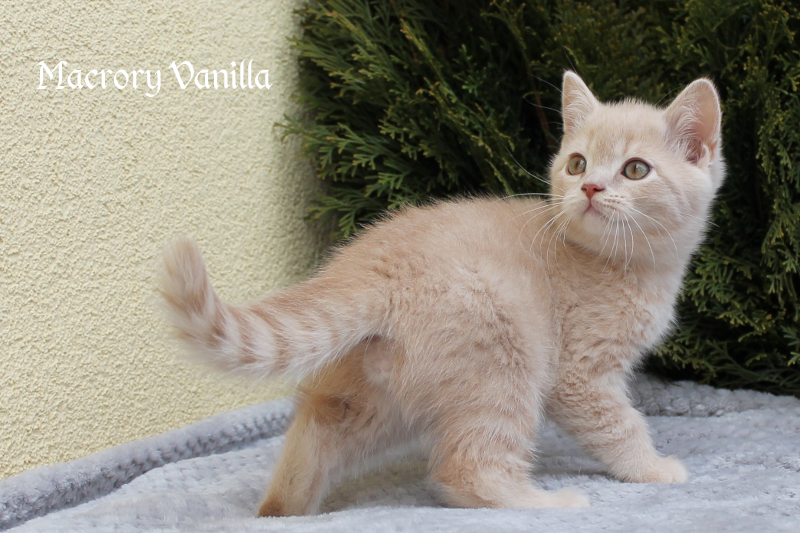
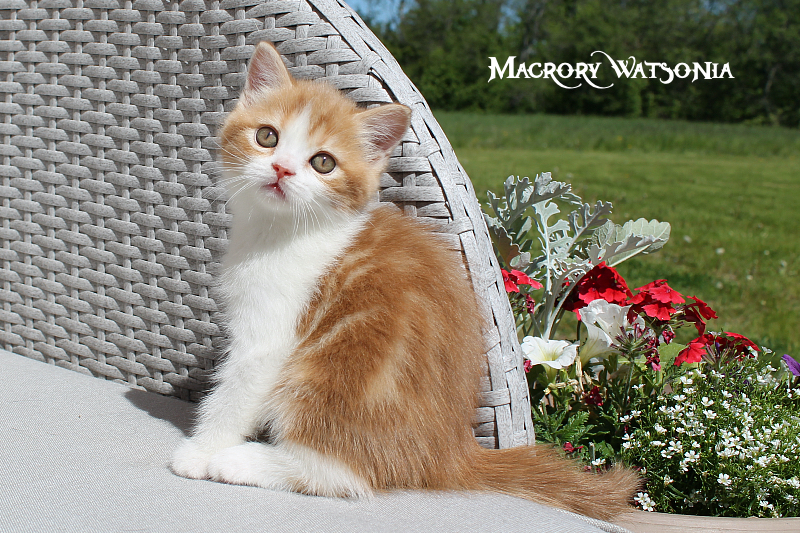
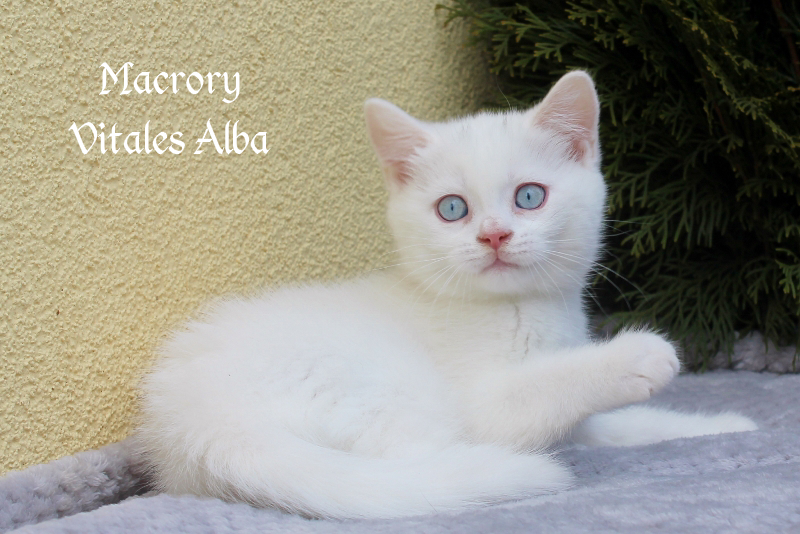
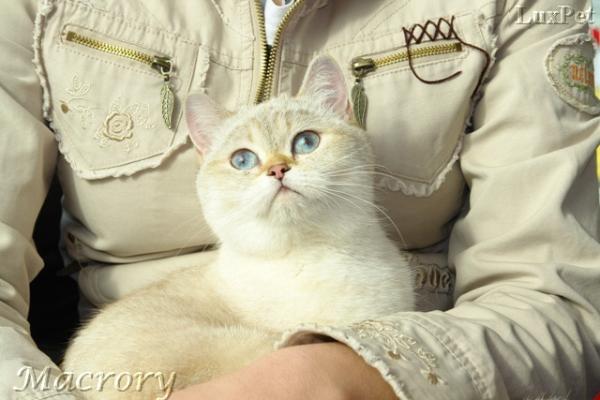
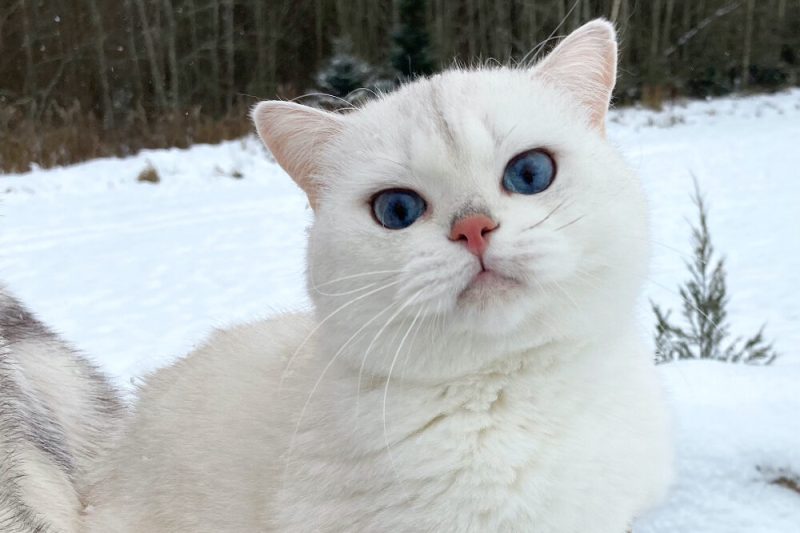
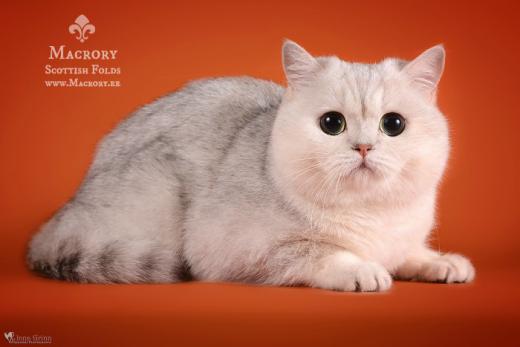
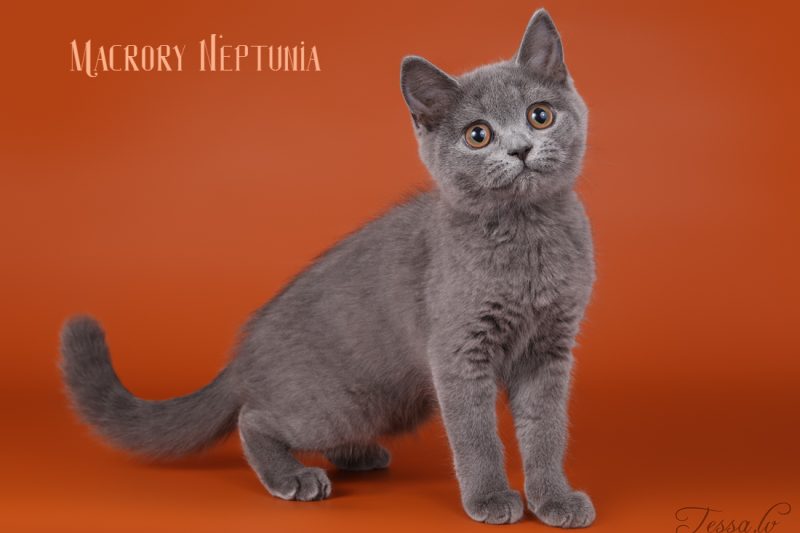
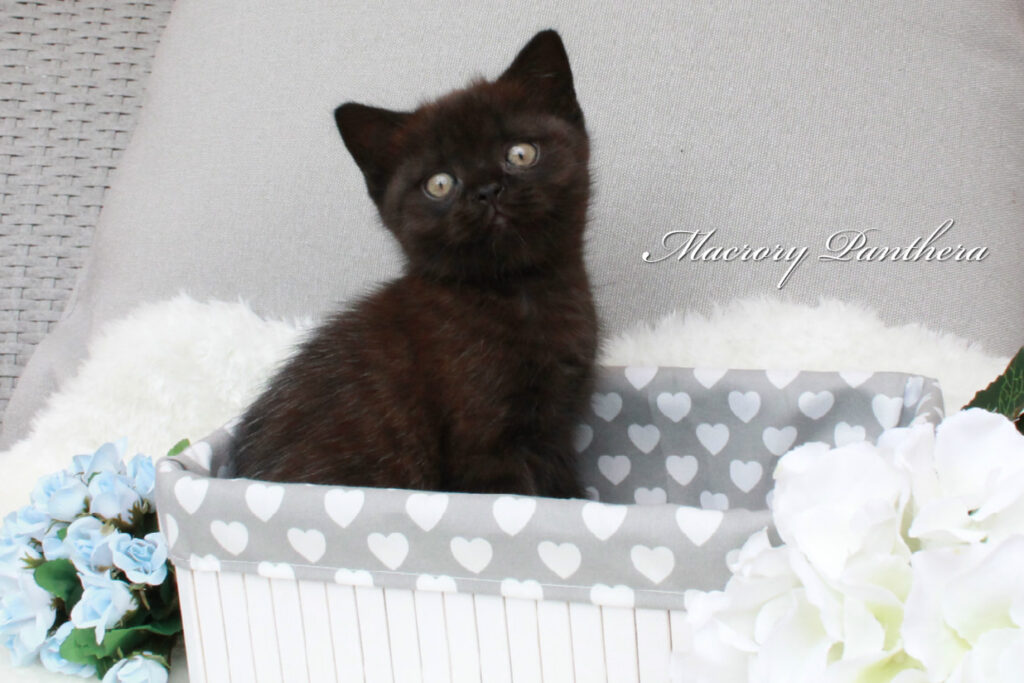
FINDING AND CHOOSING A KITTEN
One thing is certain—a kitten should be purchased from a recognized cattery. There, only cats that have undergone clinical examinations are used, their backgrounds are thoroughly investigated, and everything is done to ensure the kittens are healthy and free from hereditary or viral diseases. Of course, no breeder can guarantee that no diseases will ever occur in the future (it’s a known fact that every animal, regardless of species, carries at least three diseases that may not manifest), but by doing their best, a breeder can rule out the occurrence of diseases that can be tested for and prevented.
Unfortunately, things are still developing in Estonia. While the internet is full of ads for cheap, undocumented Scottish Folds, who can guarantee that the vet bills won’t end up costing multiples of that amount later? Sadly, this is often the case. You must be extremely cautious because you’re taking on a pet for at least 15 years, and cutting corners in the wrong place can come at a cruel cost.
t’s still true that every female cat owner thinks it would be nice to have one litter, and without checking the cat’s health or lineage, let alone the background of the stud or the cat’s breed quality, they produce a litter. This is irresponsible. Not every pregnancy ends well for the female cat—you’re also risking your own pet’s life.
Serious cat breeders will be there to help and advise you throughout your cat’s life, and that’s a great value.
A significant amount of work is done before the cat reaches its new owner to ensure the kitten is ready for life. Our kittens are socialized from birth with children, other animals, and people. They are accustomed to various household sounds, such as the vacuum cleaner. They are also trained in claw trimming, ear cleaning, grooming, tail vertebrae checking, and show posing. None of this would be done by someone whose sole goal is to make money.
First, you need to decide why you’re getting a cat. Is it just for a pet, or do you also want to participate in shows? Every litter produces kittens of different classes. The price of a breeding cat depends on its quality and type, its parents, and its lineage. A beautiful kitten can be used for breeding or as a pet, depending on the breeder’s decision, who’s on the waiting list, and how suitable the family is for that particular kitten. All pet kittens are spayed/neutered. Someone who wants to attend shows and achieve good results should choose a show-quality pet. Below is a brief description of the classes and their price ranges:
Pet – Most people want a Scottish cat simply as a home companion. They are just as charming as, for example, a show-class kitten, but their eyes might not be as large, or their tail might be slightly shorter than the breed standard’s ideal. This isn’t important for a pet. The main thing is that the cat is healthy and has a good temperament, growing into a full-fledged family member. Price for a pet: €1400.
Show Pet – Show-class cats sold as pets and spayed/neutered. Attending shows is an exciting hobby for the whole family and can easily become addictive—especially when those impressive trophies and rosettes start piling up. And who can blame you? Beautiful cats should be shown to the public. Price for show-class pets: €1500.
Rare Color Pet – Exclusive cats! These include, for example, shaded silver and gold, odd-eye (different colored eyes), point, white, solid blue, and black. These colors are rare worldwide. Price: €1600.
Breeding/Show Class – These kittens are intended for breeding in catteries. They may have a special color or something else a breeder is looking for. They are as close to perfection as possible and thus the most expensive. These cats are sold only to other catteries, kept as the best of the litter for further breeding, or offered in co-ownership (a great opportunity to get a show-class cat).
Price Includes
- Comprehensive vaccinations according to age
- Rabies vaccine at 12 weeks
- Spaying/neutering – the new owner does not need to worry about the kitten’s surgery; the kitten arrives at its new home already spayed/neutered and recovered
- Deworming treatments
- Thermal microchip with registration (directly in the owner’s name)
- EU pet passport
- Registration certificate from either TICA or WCF
- Kitten package
- Instructions
- Socialization with children and dogs
- Cat club membership for the first year
You should join the kitten waiting list early, even before the litter is born. The more flexible you are about color, sex, or other preferences, the easier it is to get a kitten from our cattery.
You can fill out the application HERE.
The kitten knows how to use the litter box and sharpen its claws in the appropriate place when going to a new home. Our kittens generally have a very strong temperament, and being socialized with dogs, they quickly become friends with the new family’s animals.
HOW IS A KITTEN’S PRICE DETERMINED?
The prices for kittens based on their classes have already been explained; now let’s discuss why they cost what they do. While it may seem from the outside that cat breeding and sales are a lucrative “business,” the reality is far from it. It’s a very expensive hobby, and turning a profit is nearly impossible. Of course, every breeder would love that! Let’s break down the costs associated with breeding, and you’ll see that making a profit is extremely rare for a breeder. We do this out of love for the breed, not to make money (and even our friends and family often don’t know the actual costs—they’d think we’ve gone crazy!). For ethical breeders, improving the breed is crucial. The goal is always to aim higher and, with some luck, find that one special gem in each carefully planned litter to continue with, show, or breed further. The rest of the litter’s siblings are then sold as pets, or some higher-class kittens may be sold for breeding to other countries.
For example, importing a top-class breeding female to the cattery costs €2,000–€4,000. Our cats all come from excellent lines with great temperament, type, and HEALTH. To produce beautiful and healthy kittens, you need to start with quality parents. After about two litters, when the offspring have been obtained from a line, the parents are retired, spayed/neutered, and sometimes go to new homes to live out the rest of their lives. Then, new lines need to be brought in. You can calculate for yourself how much investment is required to maintain high-level breeding. Simply “producing” kittens for profit wouldn’t require expensive or new cats or concern for diseases, etc. That’s the fundamental difference.
Care, supplies, a few shows, blood tests, and veterinary costs for one cattery cat until its first year average €1,000. By the time the first litter is born, the breeder has invested thousands of euros. High-quality food with vitamins, cat litter, vaccinations, dewormings, FeLV/FIV tests, and shows for one cat cost an average of €450/year. Additionally, the cost of raising one litter, which is at least the same per kitten. This doesn’t include insurance, illnesses, show trips abroad, DNA tests, marketing, or website expenses, etc.
Since we are dedicated to our kittens, we generally raise one litter at a time to give them our full attention. This means that the care of the other cats, who are currently on hold, costs us several thousand euros per year. All of this should be covered by the sale of kittens that don’t stay for breeding and go to homes as pets. Vaccinations (twice), deworming, microchipping, EU pet passport, and spaying/neutering for one kitten alone cost over €400. Add to that high-quality food, supplements, and cat litter, which amount to over €200. That’s a total of over six hundred euros. If websites are full of ads selling kittens for around a hundred euros, it should immediately raise a red flag. Clearly, those kittens haven’t been raised in a sufficiently good environment, let alone had their parents’ health tested. All of this costs, and it costs a lot.
In addition to financial expenses, we as breeders dedicate our time, affection, and care to them. We weigh them every day, play with them, clean, tidy up, socialize them, and so on. The kittens have an entire room in the house dedicated to their growth, where they have space to romp around. Outdoors, there’s a cat house with separate areas for males and females, complete with an outdoor space and a roof. There, they have climbing structures and plenty of fun in the fresh air. Males are kept separate from females. The cost of all this infrastructure must be considered. In winter, they have constant lighting and heating.
If everything goes well after investing in one cat and they produce a beautiful litter of kittens, that’s a success. Experience shows you can never be certain—you must be prepared for cesarean sections, kitten losses, or urgent trips to the clinic. There have been several cases where an imported cat costing thousands of euros turns out to be unsuitable for breeding, leaving no choice but to spay/neuter them and find them a good home as a pet. In none of those cases have we gotten our money back. This is why you need to be very critical when importing a cat based on pictures or videos. Because of this, we do everything we can to ensure the buyer is satisfied. Being honest is all the more important to us.
We are very grateful to those owners who stay in touch with us after adopting a cat, occasionally sending pictures and sharing how things are going. Every single kitten born in our cattery is “our own baby,” raised with great love, so continued contact brings us a lot of joy!
WHEN YOUR KITTY ARRIVES HOME
Before the kitten arrives home, you should already have the necessary supplies. Here’s a short list:
- Scratching post or, even better, a scratching board attached to the wall
- Litter box with litter
- High-quality kitten dry food (the same as used by the breeder)
- Food and water bowls—ceramic is best. Ideally, the water bowl should be placed away from the food
- Sleeping bed—preferably one with a cover. Cats will sleep anywhere, but they should have a safe place to retreat to. The bedding should be washable
- Comb appropriate for the coat length
- Shampoo and conditioner – as recommended by the breeder. These can be purchased later
- Toothbrush and toothpaste – you should start getting them used to it from a young age
- Special products for ear cleaning
- Nail clippers
- Toy – a fun character or feather tuft attached to a stick with a string. This encourages the kitten to play and strengthens your bond
When the kitten arrives home, give them time to explore the new environment calmly. They’re so small that, in a large house, you should initially limit their territory. For the first week, for example, keep them to a couple of rooms and gradually expand. This makes them more confident. Show them their litter box and feeding area. If a cloth or piece of fabric with the scent of their littermates is included, place it in their bed for comfort. If you’ve decided the kitten can sleep in your bed, they’ll do so for life, and you shouldn’t change the rules later.
Rules need to be established from the very beginning. They mustn’t chew on plants, should only scratch in the right places, and aren’t allowed to walk on tables, etc. You need to teach these to the kitten. A young cat learns very quickly, and life will be worry-free afterward. To correct behavior, a couple of startling claps, jingling keys, or a spritz of water is enough. Generally, I haven’t had to discipline my kittens much—they’ve been so well-behaved from a young age. Scottish cats aren’t troublemakers, so it’s easy.
